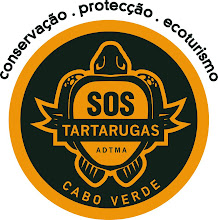
Now that we have had plenty of nests hatching in both artificial and natural conditions, we are beginning to discuss the relative merits of both. Our hatchery success rate is 70% but most of the nests left in situ are much higher at 90%+. However, the nests that we have moved would probably have been washed over by high tides or destroyed by vehicles if we had not intervened and maybe no hatchlings at all would have emerged. Our ideal would be to leave all the nests on the beach that were not below high water, but the problem so far, is that although all in situ nests have high hatching success, without exception, the majority of hatchlings have gone the wrong way and headed towards the lights of buildings and construction sites. We estimate that more than 90% of the babies born naturally this year have already been lost. If this has been happening, unmonitored in previous years, we are going to have a serious problem in 20 to 30 years when it is time for them to return to Cabo Verde.






No comments:
Post a Comment